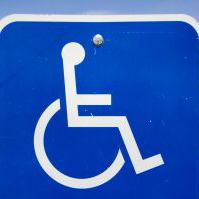Travel Tips
Updated Travel Law Improves Accessibility for Disabled/Handicapped Travelers
 Air travel can be a real adventure these days. Factor a disability into the equation, and the potential for a mis-adventure increases—which is why we have laws on the books to protect the rights of disabled passengers.
Air travel can be a real adventure these days. Factor a disability into the equation, and the potential for a mis-adventure increases—which is why we have laws on the books to protect the rights of disabled passengers.
Accessible travel guru Candy B. Harrington examines the latest updates on the Air Carrier Access Act and how it affects travelers.
The US Air Carrier Access Act (ACAA) was first adopted in 1986. Over the years, this very basic piece of civil rights legislation has been amended many times, to reflect changes in technology, equipment and air travel in general.
The most recent update, on May 13, 2009, gives disabled passengers additional rights and further expands the reach of the law. Ultimately these changes will make air travel more accessible to many people.
Coverage Expands to Foreign Airlines
The biggest change in the new ACAA is that it extends coverage of the law to all flights arriving or departing the U.S., even those operated by non-U.S. air carriers. This applies to the policies, practices and general non-discrimination mandates mentioned in the law.
 So for example, non-U.S. airlines now have to provide an accessible mode for boarding, assistance enplaning and deplaning and carry assistive devices free of charge on all covered flights. Additionally, these air carriers are not allowed to deny passage to disabled travelers.
So for example, non-U.S. airlines now have to provide an accessible mode for boarding, assistance enplaning and deplaning and carry assistive devices free of charge on all covered flights. Additionally, these air carriers are not allowed to deny passage to disabled travelers.
And although foreign air carriers are not required to retrofit their existing aircraft for accessibility on covered flights, planes ordered after May 13, 2009 or put into service after May 13, 2010 must have accessible features such as seats with flip-up armrests, accessible lavatories and on-board storage space for at least one manual wheelchair.
Additionally, the Department of Transportation (DOT) now has the legal authority to enforce the law on non-US air carriers, including the authority to fine offending carriers for non-compliance.
Get more advice in our Accessible Travel section.
Oxygen Updated
 The updated ACAA also includes generous provisions for passengers who use portable oxygen concentrators (POCs). Previously the airlines had the option to accept FAA approved POCs on their flights; however many didn’t, so that left very few options for passengers who use this equipment. Under the updated ACAA, U.S. airlines must now accept all FAA approved POCs on flights operating on aircraft with 19 or more seats.
The updated ACAA also includes generous provisions for passengers who use portable oxygen concentrators (POCs). Previously the airlines had the option to accept FAA approved POCs on their flights; however many didn’t, so that left very few options for passengers who use this equipment. Under the updated ACAA, U.S. airlines must now accept all FAA approved POCs on flights operating on aircraft with 19 or more seats.
Additionally, the DOT placed the burden of obtaining FAA approval on the POC manufacturers; which in the end will hopefully raise the number of approved devices.
This part of the law also applies to foreign carriers operating flights to or from the US, on aircraft with 19 or more seats.
 The existing regulations about in-flight oxygen remain unchanged; however the DOT expects to review those regulations in the near future. Airlines are still not required to provide this service, and passengers are prohibited from bringing their own compressed oxygen aboard. Furthermore, the airlines are allowed to set their own prices and regulations for oxygen service if they choose to provide it.
The existing regulations about in-flight oxygen remain unchanged; however the DOT expects to review those regulations in the near future. Airlines are still not required to provide this service, and passengers are prohibited from bringing their own compressed oxygen aboard. Furthermore, the airlines are allowed to set their own prices and regulations for oxygen service if they choose to provide it.
Other Changes
Although these are some of the major changes in the ACAA, the amended law also includes these important provisions:
The law now requires the “prompt” deplaning of disabled passengers. The DOT defines prompt as “no later than as soon as the other passengers have deplaned.” This means that disabled passengers will no longer be left on planes well after the flight crew has departed.
 Employees or contractors providing airport wheelchair assistance are now required to make a brief restroom stop (upon request) if the restroom is located along the path of travel to the gate. This will ultimately make for a more comfortable flight.
Employees or contractors providing airport wheelchair assistance are now required to make a brief restroom stop (upon request) if the restroom is located along the path of travel to the gate. This will ultimately make for a more comfortable flight.
The updated law specifies the dimensions of the onboard wheelchair storage space as being 13 inches by 36 inches by 42 inches. This eliminates any ambiguity about the size of the area. It also excludes power wheelchairs from being stored in this area.
Airline personnel are now required to assist disabled passengers at inaccessible ticket kiosks.
And although the new law stopped short of requiring airline Web sites to be accessible, airlines must now offer disabled passengers the same discounted Web-only fares even if booking by phone or other accessible reservation method.
Last but not least, the whole law was rewritten in a user-friendly question-and-answer format. A copy of the updated law can be found at https://airconsumer.ost.dot.gov/ (in PDF format).
And if you’d prefer to have a live person field your access-related air travel questions, then call the DOT Aviation Consumer Disability Hotline at (866) 266-1368.
By Candy B. Harrington. Known as the guru of accessible travel, Candy Harrington has covered the subject exclusively for the past 16 years.
She is the founding editor of Emerging Horizons and the author of several best-selling guide books for disabled travelers, including her newest release, the third edition of Barrier Free Travel; A Nuts and Bolts Guide for Wheelers and Slow Walkers (www.BarrierFreeTravel.net).
She also blogs regularly about accessible travel issues at www.BarrierFreeTravels.com.












